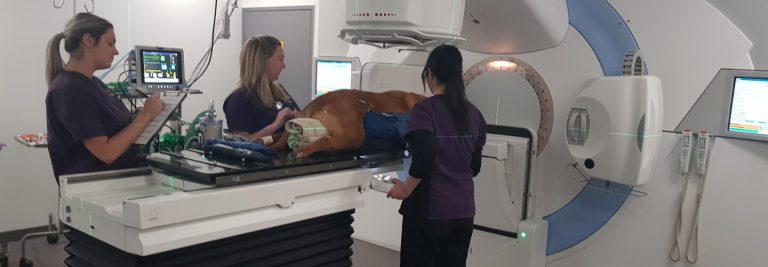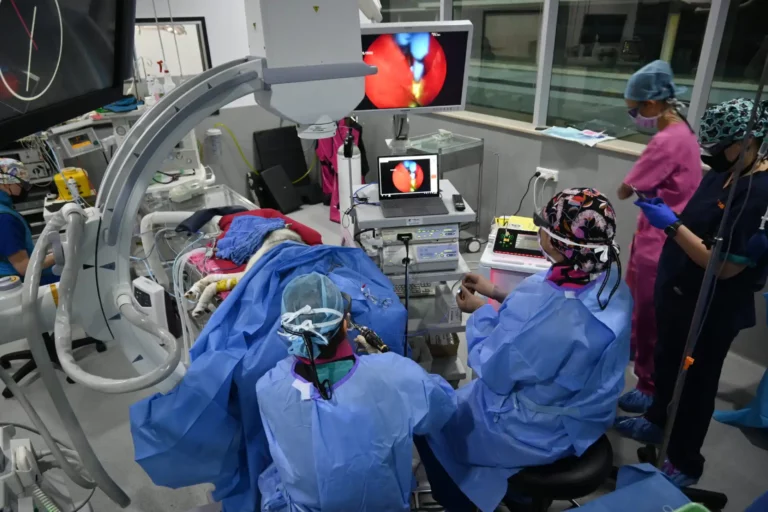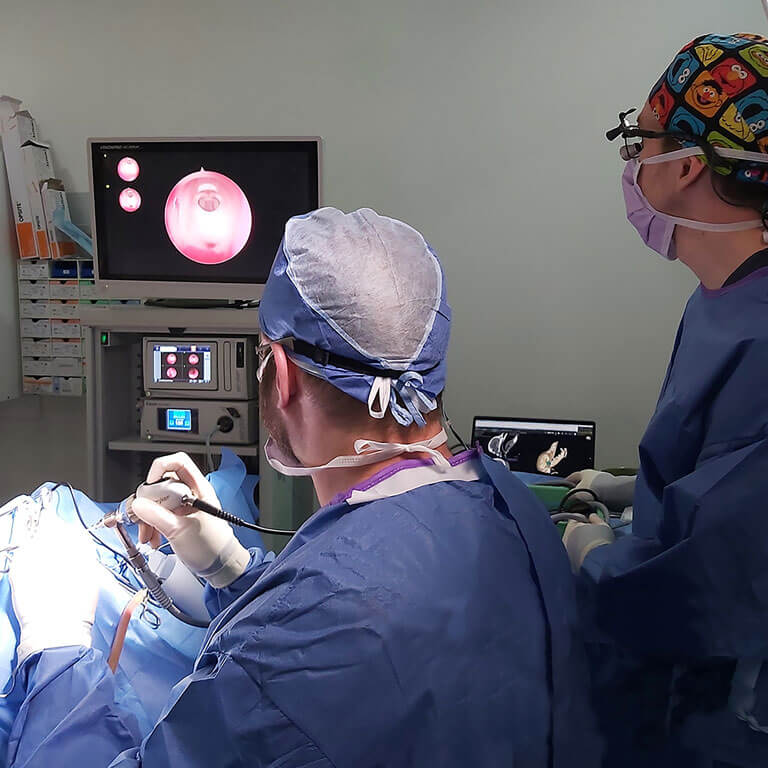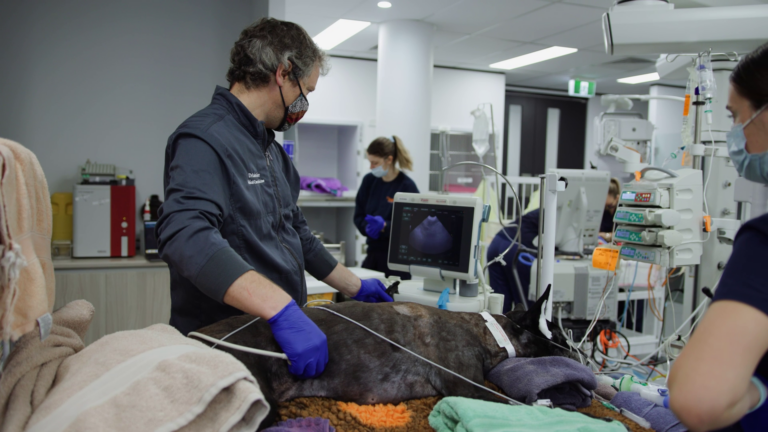By Dr Daniel James
What is a slipped disc?
IVDD, or intervertebral disc disease, is commonly known as a slipped disc. It refers to the condition where the disc in between parts of the spine bulges up into the vertebral canal, causing compression against the spinal cord. This can lead to signs such as neck pain, back pain (which can in fact seem like a sore tummy) a wobbly gait, weakness or paralysis of the back (or all four) legs and inability to urinate or defaecate.
IVDD is a very common problem in some small breeds such as dachshunds, terriers, Maltese crosses, Shih tzus, French bulldogs and larger breeds such as Labrador retrievers, German shepherds, Staffordshire bull terriers, Dobermans and others. Older cats can also suffer from slipped discs
Will the disc material go away or be put back in the right spot?
No. Just like you could never get toothpaste back into the tube, we cannot get the disc material back into the intervertebral disc space. However, in some cases, the toothpaste (disc material) may spread out across a longer space, causing less severe compression.
How are slipped discs in dogs diagnosed?
Slipped discs or IVDD can be diagnosed by the vets at SASH, thorough a physical examination. We can also determine if there is a problem in the spinal cord (also known as a myelopathy), and roughly where in the spinal cord the problem lies (such as the neck, the mid-back, or the lower back). From the history and the physical examination, our vets will then talk to you about the possible causes of spinal cord compression and disease. Sometimes, inflammation, infection, cancer, and strokes can also cause similar signs. Based on the possible causes, we may then recommend either an MRI or a CT scan at SASH to confirm the diagnosis, and pinpoint exactly where the problem is. It is important to note that both scans are performed under general anaesthesia.
What is secondary spinal cord injury and myelomalacia?
Secondary spinal cord injury refers to the inflammation, swelling and nerve cell damage that occurs because of the trauma to the spinal cord from a slipped disc. This can lead to permanent deterioration and/or myelomalacia (softening of the spinal cord).
Myelomalacia is a devastating but incredibly rare type of secondary spinal cord injury that progresses from the original point of trauma up and down the spinal cord. It is most common in patients that have had a very rapid onset of paralysis. Thankfully, even in these dogs, myelomalacia is very rare.
What are the treatments for slipped discs?
There are 2 main treatment options:
1. Conservative management for slipped discs
This involves strict rest and confinement for 6 weeks, painkillers, anti-inflammatory medications, and rehabilitation therapy. Conservative management is only appropriate if your dog is very mildly affected. However this option does carry the risk of further deterioration with time. If there has been insignificant improvement or any deterioration with in 2-3 days, then surgery should be considered.
Many patients will not return to normal. Some may walk with a hunched back, but be pain-free, and some may continue to walk with a wobbly gait. Approximately half of dogs treated successfully with conservative management for a slipped disc in their mid-back will have a recurrence of their clinical signs within 6 months.
Results from conservative management for slipped disc
Half of dogs with a slipped disc treated with pain relief and rest alone will have recurrence of their clinical signs. The recurrences may be treated conservatively again though surgery is likely to be more appropriate given the recurrence.
2. Decompressive surgery for slipped discs
Decompressive surgery for slipped discs involves a general anaesthetic and surgery to remove the disc material in the vertebral canal. After surgery, your dog will remain in hospital until they are able to urinate and fully empty their bladder independently. After surgery, physical rehabilitation is performed with all patients through the SASH Sports Medicine and Rehabilitation department. We recommend that you continue to bring your dog for appointments with our Rehabilitation team to maximise and speed up their recovery.
When is surgery recommended for slipped discs?
There are several instances when surgery is recommended. E.g. if your dog is:
- Unable to walk
- Not improving or deteriorating despite appropriate care with conservative management
- In severe pain despite appropriate pain medication
Sometimes, surgery would be recommended if a large degree of spinal cord compression is seen on CT or MRI, even if your dog appears to be not too severely affected.
What happens during surgery for slipped discs?
Surgery involves removing part of the side wall of the spinal canal with a high-speed bone burr to gain access to the spinal cord and the displaced disc material. The disc material is either scraped or cut away so that pressure is taken off the spinal cord and it can return to its normal position.
Immediately after surgery, we keep our patients on injectable opioids, such as morphine or fentanyl. Once they are comfortable, they are weaned from these drugs onto oral painkillers. We keep patients on IV fluids until they are eating well. Most animals are markedly improved within a week of surgery and walking well by 6 weeks. Some animals take longer, though usually these dogs have been affected for a long time before surgery is performed. As a rule, we always keep them in hospital until they are urinating on their own as this is the hardest aspect to manage at home in a paralysed or partially paralysed patient.
Slipped disc surgery results
Often decompressive surgery for slipped discs is highly successful. Greater than 95% of dogs will walk and run again as normal or very near to normal.
In some cases, where dogs deteriorate rapidly prior to surgery, this deterioration may still continue after surgery. However, even in these cases, the vast majority will recover the ability to walk and run.
In dogs that are treated surgically, a small percentage may suffer another slipped disc. However, the vast majority of cases they go through the rest of their life with few if any further spinal problems.
Caring for dogs with slipped discs
Regardless of whether your dog has had surgery, they will need to be rested for 6 weeks. This involves strictly confining them to a small space (generally 0.7 x 1m for small dogs, up to 2m x 2m for large dogs) for the full 6 weeks. They are allowed to walk on a harness to toilet for 5 minutes, every 4-6 hours, but should spend most of their time confined. They must not be allowed to run, jump or play, or have any off-lead activity until their strength and coordination returns to a level where they are self sufficient and unlikely to fall over doing normal activity such as walking or going up and down stairs.
Every patient receiving orthopaedic surgery (such as IVDD surgery) at SASH will receive rehab therapy at the Sports Medicine & Rehabilitation department as part of their post-operative recovery phase before discharge from hospital. We also recommend continuing rehab as an out-patient once your dog has been discharged.
Resting dogs after surgery for slipped discs
It is essential that your dog is rested after surgery. After surgery, even though your dog may appear improved, they will be very wobbly and uncoordinated. If unattended and unconfined, they can fall and hurt themselves leading to damage to their limbs or even further damage to their spine. If your dog is being treated conservatively, overactivity can lead to more disc material displacing into the vertebral canal, causing neurological deterioration paralysis and may result in your dog requiring surgery.
Surgery for slipped discs at SASH
There are a number of benefits for having surgery at SASH North Ryde for slipped discs, many of which cannot be found elsewhere in Australia. For surgeries, your pet will be under the care of not one specialist, but a whole team working together to ensure the best possible outcome.
- Specialist surgeons, including the only specialist neurosurgery team in NSW for best patient outcomes
- Specialists in Diagnostic Imaging for the most rapid and accurate diagnostics
- Specialists in Anaesthesia overseeing anaesthesia to ensure improved animal welfare and safety
- Sports Medicine & Rehabilitation Vets & Therapists to improve speed of recovery and mobility post surgery
- 24/7 vet and nurse care for recovery and in-hospital care. ICU and Specialists in Critical Care available if required




